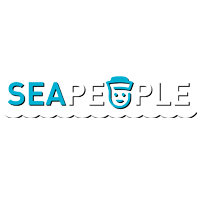
Seapeople
Title
Real-time representation of flows of people at sea
Duration
Support programme
Special call for small and medium-sized enterprises to submit outlines for the funding of data-based research and development projects in accordance with 8.7.3 f. of the BMVI "Modernity Fund" funding guideline of 17.05.2016
Funding body
Direct network partners
- JAKOTA Cruise Systems GmbH - Coordination
- Institute for Safety Technology/Ship Safety e.V.
Associated partners
-
MARSIG GmbH
Overall objectives of the collaborative project
In the planned joint project, an online module is to be developed which, on the basis of the AIS data of ships and associated information on passenger capacities and crew sizes, can display for any sea area how many people are or were at sea there at the moment or in a period to be specified. Depending on the customer and the field of application, additional information is to be made available, e.g. which destination these ships have, when they are to arrive in which port or where these ships and thus the people on them come from.
Overall objectives of the collaborative project
Knowledge of current flows of people at sea enables authorities, for example, to efficiently design safety measures in dangerous situations. Tracking the sea area-specific flows of people over a longer period of time can also be an important information basis for the construction of offshore facilities or the basis for environmentally relevant decisions. In connection with tourism activities, the use of the system helps to plan logistics more effectively.
Results of the Institute for Safety Engineering / Ship Safety e.V.:
Needs assessment
On the basis of a questionnaire developed in the project, the functionalities and application scenarios desired by the various potential users (Mecklenburg-Vorpommern Tourism Association, DGzRS, Rostock Port, ...) for the system to be developed were recorded and evaluated in interviews. It turned out that the envisaged person forecast is particularly interesting for tourism companies. There were requests for additional information about the expected flow of people, e.g. in relation to the age of ship passengers.
Use scenarios
In recent years, the media have been showing increasing resentment about the ever-increasing streams of visitors to certain cities and regions around the world. One example is the Italian lagoon city of Venice, which has often been in the media spotlight. But also cities like Amsterdam, Palma de Mallorca or Key West in Florida - USA see themselves increasingly overrun by cruise tourists and fear, among other things, environmental damage. National authorities are therefore increasingly imposing restrictions on the number of tourists. The restrictions on passenger shipping that are currently in force or are expected in the future have been compiled in a clear chart.
In the future, the system developed in the project can help both shipping companies and land-based industries to integrate these rules into route planning in good time. It is also conceivable to establish a booking system for regions with passenger restrictions.
Legal examination of copyright, exploitation and dissemination rights of the data
According to the Ordinance on Conditions of Call, ships calling at the internal waters of the Federal Republic of Germany are obliged to report the total number of persons on board to the competent authorities. The collection of all data subject to reporting is carried out via the National Single Window System, which is used on behalf of the Federal Transport Administration, e.g. by the port offices in the respective municipalities. Data in itself is free of any rights. There is no ownership of data, neither research data, personal data nor geodata. The collected data in itself, e.g. in the joint project the collection of numbers of persons, accordingly does not constitute a work protected by copyright. Only when the collected data is integrated into a database, visualised, processed and / or evaluated, does the data become a work worthy of copyright protection. This fact applies universally to any kind of data, regardless of the effort that the data generation may have required or the intended use. However, if one understands "data" to mean content that contains, for example, images or text that goes beyond mere information, then property rights may exist. This does not apply to the numbers of persons recorded, as this is purely an indication of quantity that can be determined by simple counting.
Despite their general lack of protection under copyright law, the use of data can be subject to restrictions. On the one hand, this applies to personal data, the collection and processing of which is regulated by the Data Protection Ordinance. In addition, data may contain business secrets, the use of which may also be subject to legal restrictions. In the case of project-relevant data, the shipping companies would therefore have to prove which data, if any, are to be classified as trade secrets, so that use can be bound to certain rules. In order not to violate data protection rights, the data used in the project is based exclusively on non-personal data. Anonymised data are not considered personal data! The anonymised collection and processing of information on gender or age is therefore also possible, as long as the data collected does not allow any conclusions to be drawn about a specific person.
Results of the Institute for Safety Engineering / Ship Safety e.V.:
Algorithms for quantifying numbers of people
Since the number of passengers is rarely transmitted with the AIS data, the question arose as to whether it is possible to establish a correlation of ship size with passenger numbers. In other words, can the size of a cruise ship be used to infer the number of people on board? For the analysis, all currently known cruise ships were first recorded with their reported crew and passenger numbers and these passenger numbers were related to the ship dimensions. A chart was created to show the correlation. For the quantitative observation, a summary of ship lengths in 50-metre increments and an allocation of the average passenger numbers for the ship lengths in the respective range was carried out. A clear dependency can be seen, which is, however, not linear. It is also noticeable that with increasing ship size, less and less crew is responsible for more and more passengers. The curve found can be integrated into the system to be created and used to derive unknown passenger numbers if no other data sources are available for this.
Possible crew sizes were also determined for merchant ships. The number of personnel working on board depends less on the size of the ship than on the type (e.g. cargo ship, container ship, tanker) and the work to be carried out on board. Nevertheless, the numerical framework for all merchant ships is narrow. It ranges from a minimum of 12 to a maximum of 25 persons. A dependency between the age of the ship and the number of crew was also found: The older a ship is, the more technical crew is needed to operate and maintain all systems.
The derivation of passenger numbers for ferries is complicated. Unlike cruise ships, which are usually largely fully booked, the actual number of people on board is very variable and cannot be set approximately equal to the possible capacity.

Presea
Title
Real-time based maritime traffic forecast
Duration
2019-2022
Support programme
"Real-time Technologies for Maritime Security"
Funding body
BMWI
Direct network partners
- JAKOTA Cruise Systems GmbH | FleetMon - Coordination
- Institute for Safety Technology/Ship Safety e.V.
Associated partners
-
Reederei F. Laeisz GmbH
Overall objectives of the collaborative project
The aim of the project is the software-based implementation and graphic representation of a real-time-based forecast of maritime traffic for up to 14 days in advance with a probability of approx. 90-70 % (decreasing with requests extending further and further into the future). On a generally accessible online platform (possibly subject to a fee), it should be possible to query the expected shipping traffic at a specific time within the coming days and in a selectable sea area via a user-friendly interface. It should also be possible to limit the information to certain types of ships, e.g. tankers or cruise ships, by means of a filter.
Overall objectives of the collaborative project
The presentation is based on the linking of information readable from the ships' AIS data, the timetables of feeder, liner, ferry and cruise ships and external influences such as tides by means of a "big data" evaluation algorithm. Variants for the individualisation of usage rights for different target groups are to be provided. The presentation of the maritime traffic forecast should be possible on both PCs and mobile devices and provide a new service for the maritime industry, thus enabling innovative business models.
Results of the Institute for Safety Engineering / Ship Safety e.V.:
Needs assessment and user analysis
On the basis of a questionnaire developed in the project, the functionalities and application scenarios desired by the various potential users (shipping companies, authorities, logistics companies, insurance companies, ...) for the system to be developed were recorded and evaluated in interviews. Important application scenarios emerged. For example, in the course of the planned construction and operation of LNG bunkering stations in a port, it could be important to know when a particularly large number of ships with dangerous goods on board are to be expected in the coming days, as dangerous goods loading and LNG bunkering operations may not be carried out at the same time. The forecasting system would significantly support effective planning here.
Preparation of traffic and logistics data
In order to identify certain patterns in the traffic and logistics data, investigations were carried out into typical structures in maritime traffic, including identifying all routes in RORO traffic in the North & Baltic Sea and in the Mediterranean. In the process, 939 ferry routes were registered with the associated LOCODES of the ports connected by the ferry route. Knowledge of these routes facilitates the assignment of possible destination ports.
Worldwide container traffic takes place to a large extent according to stringent timetables on defined lines. In the project, more than 4,100 container routes were identified, which are served by approx. 116 shipping companies. The container routes identified were made available to the project partner JCS. Conversely, selected routes were compared with the LINESCAPE data of container ships provided by Jakota Cruise Systems. It turned out that the routes could also be identified in these data, but that there are often deviations, e.g. due to waiting times before ports or difficult weather conditions. The resulting delays can amount to several days. It must therefore be assumed that a real-time-based maritime traffic forecast of container ships on a purely schedule basis can be a basis, but will be too inaccurate. The integration of actual route data is necessary.
Algorithms for next-port targeting
The system for maritime traffic forecasting developed in the project is essentially based on the evaluation of the next port of call indicated in the AIS. This is indicated by the crew in a defined format in the form of a LOCODE. The design and structure of LOCODES were analysed in detail in the project and presented in a diagram. UN/LOCODEs typically consist of five letters. The first two letters are the country code, followed by three letters for the specific location, e.g. DE RSK stands for the port of Rostock in Germany. Errors often occur during the entry on board, which prevents the determination of the actually meant destination port and thus makes maritime traffic forecasting more difficult. One of the main tasks of the sub-project was therefore to create meaningful algorithms for assigning incorrectly written codes to those actually meant. As a basis for this work, the project partner Jakota Cruise Systems provided the ISV with a file containing over 60,000 unassignable destination entries. In this original file, a frequency analysis was first carried out to narrow down the data to be evaluated. For further processing, only the unassignable target entries that occurred five times or more were taken into account. For the remaining 15,000 or so, the next step was to separate out "destination entries" that did not describe any ports at all but referred to certain situations on board, such as "armed guards on board", which were included in a separate database.
The data records to be evaluated could thus be reduced to approx. 7500, which were distributed over approx. 730 different false entries. These were assigned to the ports actually meant on the basis of historical route data of the ships that had entered this incorrect information into the AIS, among other things.
Another important approach for this work was the assignment of sub-ports to the parent ports. Often only the entire port area has a single LOCODE, but in the destination entry a sub-port (e.g. oil port) or individual berth is specified by the crew, resulting in a currently unidentifiable destination entry. In order to obtain a better overview here, maps were produced for Rostock and Hamburg with the allocation of the individual sub-ports.
The resulting "translation table" was made available to the project partner JCS for integration into the self-learning algorithm.
Even though it is desired in AIS to indicate the next port by means of its LOCODE, it is more common for ship crews to enter the clear name of the port as the next destination. Since there are various ports with the same name worldwide, such as Vancouver, Sydney or around 80 others, confusion can occur. A list of ports with the same name was created and the respective location and special features of the ports were checked, e.g. whether it is a seaport, a marina or an inland port. With the help of exclusion criteria, an assignment of the actually meant port can be significantly improved, since, for example, it is not to be expected that a large crude oil tanker will enter a port without an oil terminal.
Results of the Institute for Safety Engineering / Ship Safety e.V.:
Routing with automated consideration of static and dynamic ship-specific influences
In this work package, it was first determined which influences affect the routing of ships. For this purpose, a subdivision was made into the following categories:
- Ship-specific influences (ship design)
- Ship-specific influences (cargo)
- Environmental influences/weather
- Geographical influences
- Urban infrastructures
- Legal requirements
- Political/military influences
- Further
The sub-items assigned to each category were divided into static and dynamic factors and their influence on routing and associated travel time was assessed.
Static and dynamic influencing factors affect different ships differently. A large container ship will still be able to cope with certain wave heights and wind strengths, while a cruise ship would probably avoid the same weather conditions for the sake of the passengers and take a different route or weather a day in a port. But the type of propulsion or the specific cargo transported can also have an influence on the ship route to be chosen. Accordingly, the type of ship, among other things, must be taken into account in the maritime traffic forecast. Therefore, a detailed classification for ship types was developed in the sub-project. Subsequently, it was analysed to what extent weather influences for the different ship types have an impact on their routes. For this purpose, existing historical weather data sets were combined with historical route data of ships and evaluated with regard to the question of whether there are limiting weather conditions for different ship types. The aim was to develop prediction algorithms to determine which ship or group of ships will still sail a route up to which weather parameters of wind strength and wave height. The evaluation resulted in the first usable limitations, which, however, need to be substantiated with further data. The question that arose here was whether the historical routing, e.g. avoiding a storm, was actually a conscious decision on the part of the captain because he knew that his type of ship was unsuitable for this weather or whether he simply set off later due to usual delays in port and thus avoided the storm rather by chance.
After recording all parameters, the following task was to qualitatively evaluate their effects in order to draw conclusions about the possible influence on the total journey time and thus the ETA (Estimated Time of Arrival). This is essentially influenced by the ship's speed, the route, geographical features and the port lay times. It was shown that the speed is influenced in particular by weather events, the route in particular by the design features of the ship and the port lay times in particular by the type and quantity of cargo on board. Traffic volume has a strong effect on all three aspects. In the software to be developed, the various parameters would therefore have to be weighted accordingly.
Determination of the traffic volume
The data obtained with the help of the maritime traffic forecast should be presented as clearly as possible. Various variants have been developed for this purpose. Possible options are, for example, heat maps where the traffic densities are displayed with different colours or area-related click points which, when clicked, display the number of ships in the respective area in a pop-up window. Proposals for the graphical representation of the time-based preselection were also developed.
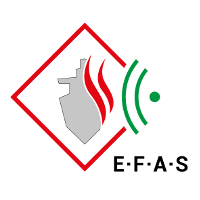
EFAS
Title
Mission support system for fire brigades to combat hazards on board seagoing vessels
Duration
2016-2019
Support programme
"Civil Security - Innovative Rescue and Security Systems" as part of the Federal Government's "Research for Civil Security 2012-2017" programme
Funding body
BMBF
Direct network partners
- Fraunhofer FKIE - Coordination
- Institute for Safety Engineering/ Ship Safety e.V.
- German Institute for Textile and Fibre Research Denkendorf (DITF)
- Ingenieurgesellschaft für Maritime Sicherheitstechnik und Management mbH Warnemünde
- Hubert Schmitz GmbH
- ATS Electronics GmbH
Associated partners
- Wilhelmshaven Fire Brigade
- German Shipowners' Association
- Port of Rostock
Overall objectives of the collaborative project
The overall objective of the project is to increase the safety of firefighters fighting hazards on board seagoing vessels in ports. Unlike in the case of accidents at sea, the shore-based fire brigades are deployed in the case of accidents on ships in ports. However, these fire brigades only have a basic nautical training. In principle, it is hardly possible to transfer land-based measures and systems to ship-based hazard control. The reasons for this are the very different spatial conditions on different classes of ships and the diversity of cargoes. In addition, there are situation-dependent conditions such as the manoeuvrability and stability of the ship (e.g. in the event of the ingress of extinguishing water), the steel environment, which has special properties, e.g. with regard to the development of heat, and the fact that, unlike in the case of a house fire, emergency forces have to make their way to the source of the fire in the opposite direction to the development of smoke when fighting the danger in the ship's hull. This creates an increased risk for the emergency services. In order to avoid damages and impairments, the project aims to increase the safety, efficiency and effectiveness of the emergency services with new technological developments. For this purpose, an innovative overall technological concept is being developed, which is composed of individual components. A constantly updating situation display system will be designed for the fire brigade's on-site operations management, which will be available to the fire brigade's operations management. On the one hand, depending on the type of ship, this is fed from a database to be developed with basic information such as fire-fighting equipment and safety systems available on board as well as the fire-fighting plan of the respective ship, technical ship data and access possibilities. On the other hand, it processes ship-specific cargo and dangerous goods data as well as passenger lists.
Overall objectives of the collaborative project
Digitised deck plans are to form the basis of the situation display. The situation display system will also receive a component for decision support, which will suggest sensible attack tactics taking into account the danger location (e.g. superstructure, engine room, cargo) and the expected development of the situation.
A system for locating firefighters on board during operations is to be developed. In addition, the condition of firefighters is to be recorded through the further development of intelligent clothing, e.g. for recording the ambient temperature, oxygen supply and other parameters. The localisation of the emergency forces and the recording of their condition via real-time monitoring represent an important input for the decision support system and help to correctly assess situations and to protect and guide rescue forces depending on the development of the danger. For the necessary broadband communication, a robust data connection from the ship is required. LTE systems are being researched for this purpose. A holistically optimised communication concept should also improve the efficient exchange of information between the on-site command, the teams on board the ship, the crew of the ship and the situation centre.
In addition, the acceptance of the developed support systems will be examined during the project, technical solutions will be transferred into standards and future developments such as changes in the fuels used (e.g. LNG; methanol, hydrogen) will be estimated.
Results of the Institute for Safety Engineering / Ship Safety e.V.:
Analysis of shipwrecks, scenarios
In order to narrow down the type of information required, an analysis of shipping accidents in port areas was first carried out. The period under investigation was 2000-2016. Reports in the media as well as investigation reports by the competent authorities in Germany (BSU) and other countries were evaluated for the list. The data was classified according to the type of accident (fire, water pollution, leakage of hazardous substances, industrial accident, water ingress) and relevant aspects (type of ship, type of cargo, alarm chain, cause of the accident, measures, problems during operation, damage). A total of 390 accidents were recorded, most of which were incidents involving water pollution. In these incidents, the intervention of the fire brigades is usually not associated with an operation on board, so they were not examined in more detail in EFAS. A more detailed evaluation was made of 45 incidents that appeared to be of particular relevance. Based on the accident analysis, the scenarios "fire" and "hazardous substance leakage" were identified as particularly frequent on the one hand and as particularly relevant on the other.
Analysis of training content
A survey was conducted to find out which topics the fire brigades think should be trained more in the future. A comprehensive questionnaire was developed for the survey. The results showed that especially issues related to water ingress, evacuation of persons and the use of alternative fuels should be taught more frequently and intensively in further training courses. The reading and evaluation of ship plans for a quick preparation of bearings and planning of measures was also assessed as a necessary need for further training, similarly to questions related to communication between all parties involved and maritime English.
Development of teaching materials
Within the project, the "Handbook for fire brigades - emergency management on seagoing vessels" was produced - a compendium for fire brigades on the specific conditions on board and the special features of the safety systems on different types of ships. The book was presented to the Havariekommando, where it was rated as very good teaching material.
Furthermore, a deck model was made for the illustrative presentation of ship plans and for use in the preparation of situation pictures. An accident can thus be quickly illustrated and possible attack routes for the emergency forces can be discussed using the model. At the same time, the deck model can also be used for simulation games. For use in further education courses, an LNG bunker simulation model was built for practical practice of the courses of action before, during and after the bunkering of liquefied natural gas.
Results of the Institute for Safety Engineering / Ship Safety e.V.:
Recommendations for action
For the integration into the decision support system (EUS), concrete recommendations for action for emergency forces were developed for the defined scenarios. For this purpose, tree structures were first created, e.g. for the case of "fire", along which menu navigation would be possible and which would guide a user step by step to the information he or she is looking for (e.g. fire, fire prevention, fire prevention). Fire on tanker Fire on oil tanker Fire in the engine room extinguishing systems in the engine room). When clicking on the individual fields, the respective stored information could then appear in the EUS.
Performance limits of the human body
The institute carried out extensive research on limit values of various physical/chemical quantities with regard to the maximum load capacity of the human body. This was to be used to define sensible alarm thresholds for the sensor technology integrated into the protective clothing. Among other things, the resilience of the body to temperatures and pressure as well as chemical substances that are to be expected in fire gases were investigated.
Field test and exercises
During the project period, various smaller field tests for functional tests were prepared together with the other direct or associated partners. These took place in the fire container in Wilhelmshaven.
In addition, an extensive final evaluation exercise was organised on the traditional ship in Rostock-Schmarl to test the interaction of all the sub-technologies developed by the individual partners. The Rostock fire brigade was won over as a testing user. The exercise was successfully carried out on 23 September 2019.
All project results are described in detail in the final report.
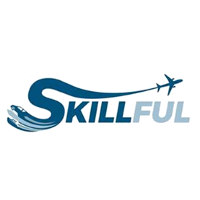
Skillful
Title
Skills and competences development of future transportation professionals at all levels
Duration
2016-2019
Website
Support programme
European Union's Horizon 2020 Research and Innovation Programme
Direct network partners
- Forum des Laboratories Nationaux Europeens de recherche Routiere - Coordination
- University of Newcastle upon Tyne
- Fundacion de la Comunidad Valenciana para la Investigacion, Promocion y Estudios Comerciales de Valencia Port
- Universita degli Studi di Firenze
- Zilinska Univerzita v Ziline
- Ethniko Kentro Erevnas Kai Technologikis Anaptyxis
- Deep Blue SRL
- Teknologian tutkimuskeskus VTT Oy
- Tyoethehoseura RY
- European Conference of Transport Research Institutes
- Institute for Safety Engineering / Ship Safety e.V.
direct affiliated partners
- Foundation Wegement - a European Association of Universities in Marine Technology and related Sciences
- Union Internationale des Chemins de Fer
- Belgisch Instituut voor de Verkeersveikligheid VZW Institut Belge pour la Securite Routiere ASBL
- Berlin University of Technology
- EURNEX e. V.
- Universitat de Valencia
- Politecnico di Torino
- University College Dublin, National University of Ireland
- MOV'EO
- Instituto Superior Tecnico INSTITUTO SUPERIOR TÉCNICO - BENEFICIARY
Overall objectives of the collaborative project
The transport sector employs over 10 million people in the EU. At the same time, transport is a social sector that is developing rapidly and is highly influenced by automation, electrification and greening, and therefore faces problems in filling its different areas with adequate and qualified personnel. This fact makes changes in training and education content, curricula, tools and methods absolutely imperative, incorporating lifelong learning aspects for professionals in all transport sectors. The vision of SKILLFUL is to identify the skills and competences needed by the transport workers of the future and to define the training methods and tools to fulfil them. For the above trends, employability through SKILLFUL will be closely linked to the future requirements for transport occupations for all transport modes and multimodal chains and for all levels/types of workers, while including and integrating all training modes in a balanced way.
Overall objectives of the collaborative project
To achieve this, SKILLFUL aims to review the existing, emerging and future knowledge and skill requirements of workers at all levels in the transport sector and to structure the key specifications and components of curricula and training courses needed to meet or optimise these competence requirements. New approaches in the education and training chain will be identified to achieve Europe-wide competence development. The project results will be verified through a large number of pilot courses with low to high skilled workers from all transport modes across Europe.
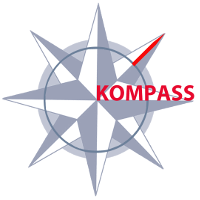
Compass
Title
Competence and organisation for mass casualties in maritime shipping
Website
Duration
2014-2017
Support programme
Research for Civil Security
Funding body
BMBF
Direct network partners
- Institute for Safety Technology/Ship Safety e.V. (coordination)
- mainis IT-Service GmbH
- GS Electromedical Devices G. Stemple GmbH (GS), corpuls
- Albert Ludwig University, Institute for Sociology (ALU)
- BG Klinikum Unfallkrankenhaus Berlin gGmbH (ukb)
- Greifswald University Medical Centre, Department of Trauma and Reconstructive Surgery (UMG)
Associated partners
- AIDA Cruises
- Bugsier-, Reederei- und Bergungs-Gesellschaft mbH & Co. KG
- Rostock Port & Seamen's Office
Overall objectives of the collaborative project
Major emergencies in the maritime environment can occur at any time and affect a large number of people. While there are now tried and tested operational concepts for complex damage situations on land, this is not the case for the sea and port area.
A mass casualty incident at sea presents many special circumstances compared to land, such as difficult access for rescuers, distance, limited space, limited means of transport, especially in severe weather conditions.
Overall objectives of the collaborative project
Dealing with such an emergency requires the effective cooperation of various actors: rescue teams, national and international authorities, shipping companies and port operating companies must communicate with the ship's crew and make joint decisions to provide the best possible care for those affected.
The aim of COMPASS is to design, develop and implement an integrative management system for patient care at sea, consisting of structural, organisational and technical measures.
Results of the Institute for Safety Engineering / Ship Safety e.V.:
Within the sub-project of the joint project KOMPASS, the Institute for Safety Technology / Ship Safety e.V. has developed and tested various approaches for making the management of an MANV at sea more effective, among other things with regard to
- Integration of the topic of MANV at sea into the medical refresher courses for ship's officers.
- the integration of offshore installations into an evacuation concept
- the creation and training of MANV concepts on passenger ships
- the expansion of the medical equipment on board specifically for MANVs
The concepts and results developed represent basic approaches that can be adapted for the concrete ships or authorities. An important project result is the general sensitisation of stakeholders to the issue.
Results of the Institute for Safety Engineering / Ship Safety e.V.:
While accidents such as fire or water ingress on ships are well-known and studied incidents from maritime tradition, an MANV at sea is a relatively new scenario, which has gained in importance mainly due to the strong increase in passenger shipping in recent years.
During the course of the project, it also became clear that improved political solutions, or even political solutions at all, would have to be created in the future in order to be able to prevent and manage MANVs at sea more effectively. In particular, the federalism in Germany appeared to be a hurdle in many places for a uniform technical and organisational processing of an MANV at sea. At the same time, the ever-increasing size and number of persons on cruise ships raises questions. Legal limits seem to make sense here.
The highly complex topic is not finished with the end of the project and must continue to be researched intensively in the future.
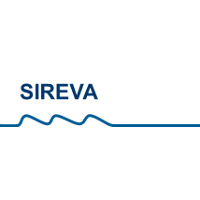
Sireva
Title
Safety of persons during rescue and evacuation processes from passenger ships
Duration
2013-2016
Support programme
Research for Civil Security
Funding body
BMBF
Direct network partners
- Fraunhofer FKIE - Coordination
- ATS Electronics GmbH
- Wismar University of Applied Sciences, Department of Maritime Studies
- IAW, RWTH Aachen University
- INTERSCHALT Maritime Systems AG
- ISV - Institute for Safety Engineering/Ship Safety e.V.
- Lloyd's Register
- Marinesoft GmbH
- MARSIG mbH
Associated partners
- AIDA Cruises GmbH
- Federal Ministry of Transport, Building and Urban Affairs (BMVBS), WS 23
- Rostock Port and Seamen's Office
- German Shipowners' Association
- World Maritime University
Overall objectives of the collaborative project
The overall objective of the project was to support a complete, fast and safe evacuation of passenger ships by developing innovative concepts and technical solutions with special consideration of elderly and mobility-impaired persons. The concepts should increase the safety of people on passenger ships without restricting their freedom and personal rights.
Overall objectives of the collaborative project
Taking psychological findings into account and with the aim of achieving a high level of usability, technical approaches were developed for person tracking, steering crew members and passengers, stationary displays for the crew, dynamic escape route displays, a decision support system module and the establishment of a shipping company situation centre. The developed concepts and technologies were evaluated and revised during field tests.
Results of the Institute for Safety Engineering / Ship Safety e.V.:
The ISV e.V. sub-project focused on the areas of evacuation procedures and structural and technical support, especially for persons with limited mobility (PEM).
In an extensive field test with more than 150 people involved, different evacuation concepts were examined depending on the storage of the life jackets in the cabins or at the sample station. The results showed that, depending on the size of the ship, the structural conditions and the process organisation, a shorter total evacuation time can be expected if the life jackets are issued to the passengers at the sample station.
Interviews with the crew were conducted on the organisation and conditions of transporting PEM in emergency situations. In parallel, persons with limited mobility were interviewed about their support needs on board.
Results of the Institute for Safety Engineering / Ship Safety e.V.:
With this background, aids were tested directly on board and evaluated according to the criteria determined. Principle models were developed to facilitate the overcoming of stairs with rolling aids. The research showed that a rescue harness carrying seat is a good solution in many respects to support PEM on the way to the assembly point in an emergency. Promising development potential was also revealed by looking at the lifts on board passenger ships. The possibilities of upgrading the lifts for inclusion as transport aids in emergency situations are on board (in contrast to on land) have hardly been exploited so far.
The research on the level of training of crews as well as in teaching on how to deal with passengers with "special needs" [PEM] revealed potential for expansion and concretisation beyond the current internationally defined framework (STCW).
